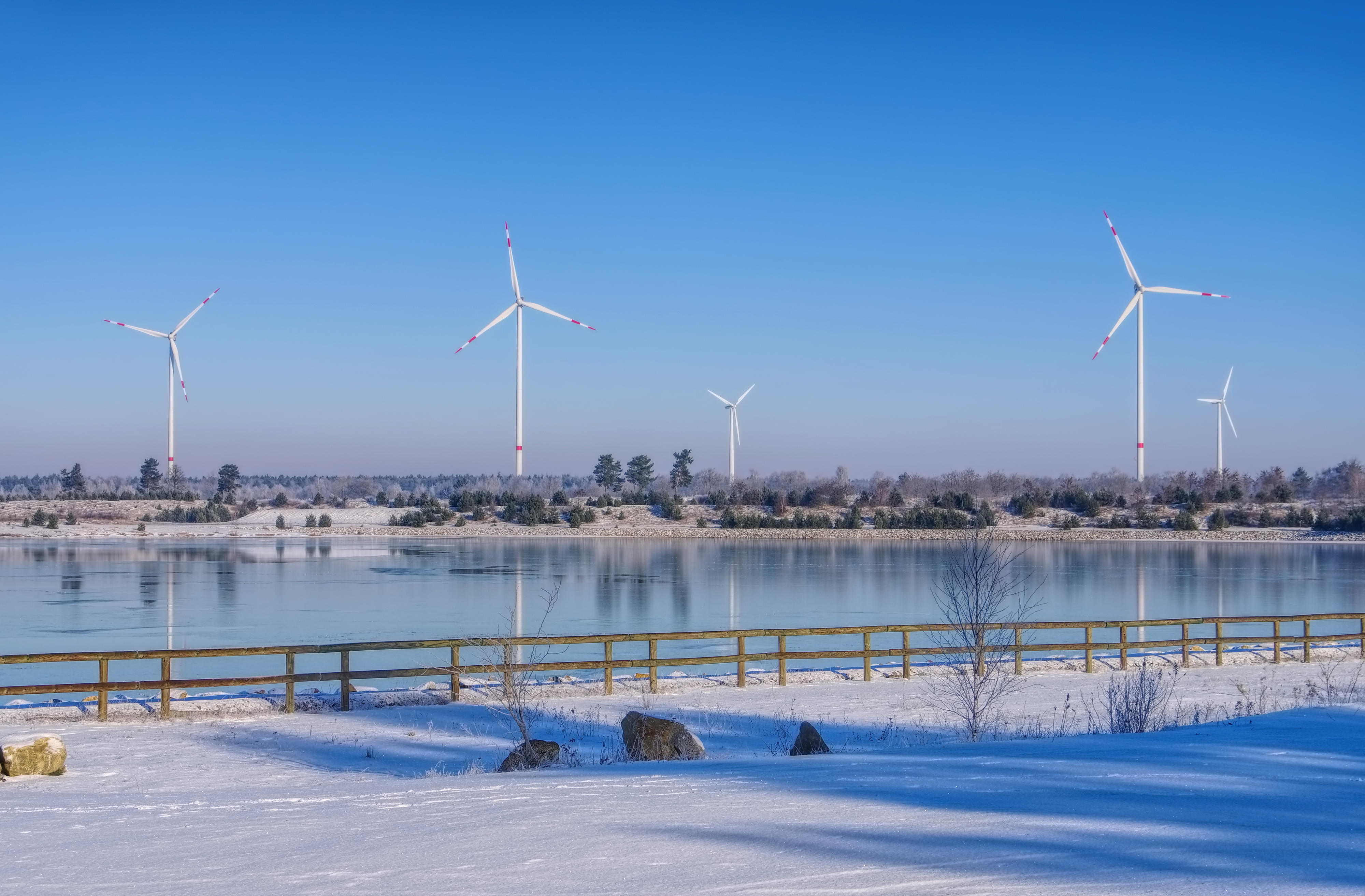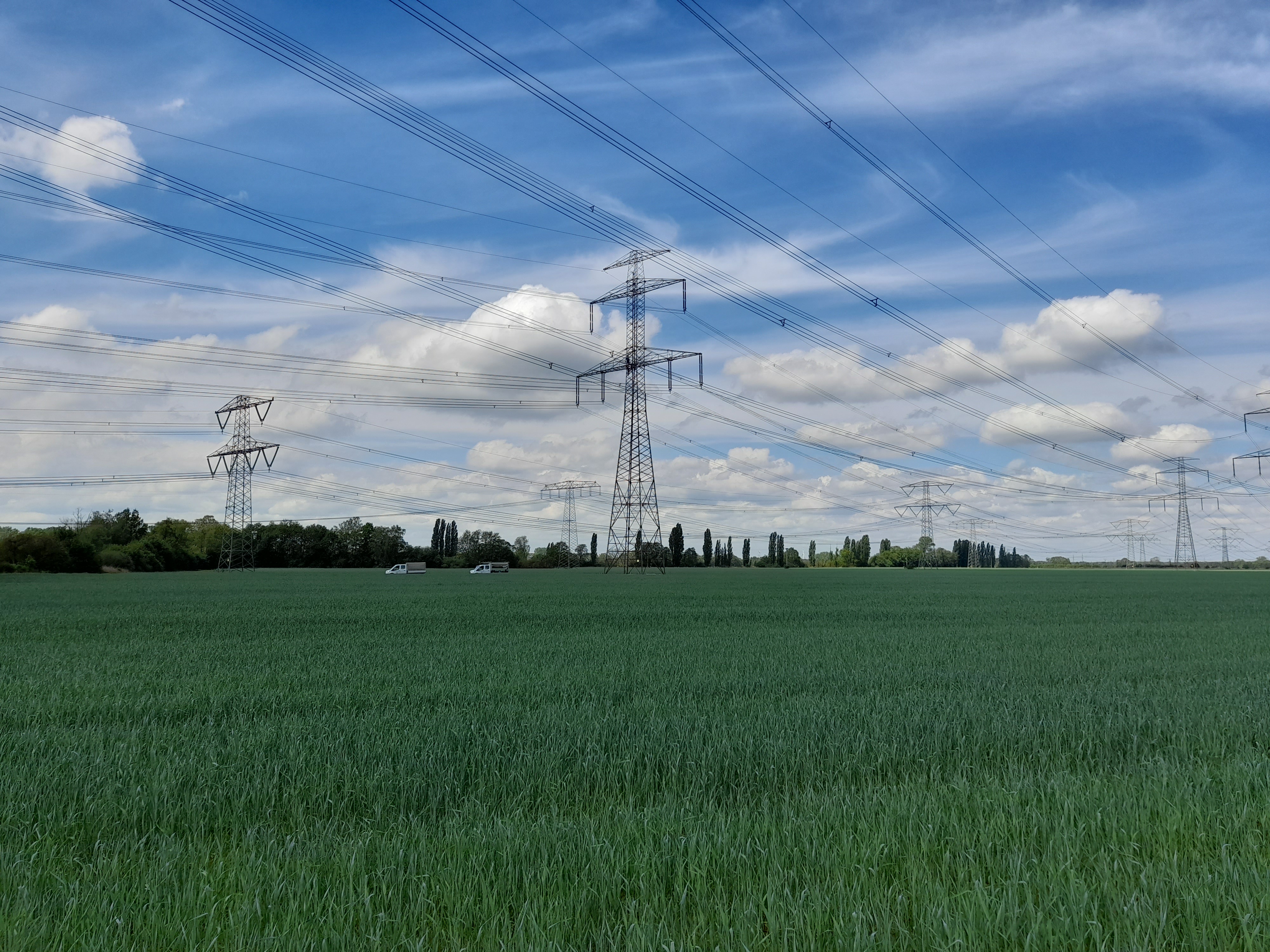Hint: This website is not optimized for your browser version.
Energy market topics
Storm Sebastian – how flexibly the electricity market responded
October 18, 2017 – Storm Sebastian struck Germany in September 2017, leading to a large amount of electricity being fed into the grid from wind energy. On 13 September, wind turbines both on land and in the North and Baltic Seas produced over 50% of electricity consumed in Germany. The SMARD data show how conventional power plants respond to such peaks.
Although electricity demand and generation from wind and solar power can rise or fall quickly, in the past many conventional power plants were designed rather to produce electricity at constant levels. They could only have reacted comparatively slowly to such dynamic changes because they could only be started up or shut down relatively slowly. Such power plants have made progress in recent years as far as becoming more flexible is concerned. Nevertheless, flexibility differs greatly between different types of conventional generation.
For example, the week from 11 to 17 September 2017 shows that conventional power plants can meet the greater flexibility requirements. On the Wednesday of that week, 13 September, Storm Sebastian struck Germany, causing at times very high wind infeed both offshore and on land. Plus, at the same time, the sun was shining in Germany. These weather conditions placed high demands on the flexibility of conventional power plants.
Figure 1 shows energy generated by individual energy sources and consumption in Germany in the week from 11 to 17 September 2017. The types of generation are presented in an order that allows the flexibility of conventional generation to be identified.
Figure 1 shows that on Wednesday, 13 September feed-in capacity from onshore wind energy installations at times amounted to nearly 36 GW and offshore wind energy a further 2 GW. When taking this wind energy and adding a maximum PV feed-in of 12 GW, plus the other sources of renewable generation, together theses renewables covered two-thirds of total electricity consumption (1,447 GWh) on that day with 980 GWh.
Also apparent is the fact that conventional generation managed to bridge the gap between renewable generation and demand, and that conventional installations were able to constantly adapt to any changes. Conventional generation reacted with flexibility. Coordination using wholesale prices on the market works. Supply exceeded demand in this period and Germany exported electricity to its neighbours at the same time. A detailed look at feed-in over the course of that stormy week in September shows that, in addition to pumped storage, hard coal and lignite-fired power plants provided the flexibility required on the electricity market.
Pumped storage stations
Pumped storage stations help to reduce the degree of flexibility required of conventional power plants. They increase electricity consumption around midday, for example, by taking energy off the grid and storing a lot of electricity generated by solar plants. At other times, if additional electricity can get a good price on the market, pumped storage stations can generate electricity fast and flexibly and feed it into the grid. Pumped storage thus fulfils a role in the energy economy by providing additional consumption or generation in order to reduce pressure on the system. Without it, hard coal and lignite-fired power plants would have to make much greater and more rapid adjustments. Overall, generation and consumption from pumped storage stations enable coal-fired power plants to operate at a more constant level.
Figure 2 shows energy generated by pumped storage stations in the week from 11 to 17 September 2017.
Pumped storage stations are currently the only type of electricity storage of a relevant size that is available and operating in the wholesale electricity market. There are other types of electricity storage, such as battery-storage systems, but their capacity is far smaller. They are primarily used for self-supply and on the balancing market.
Around 9 GW of installed pumped storage capacity is available to the German electricity system. It was previously used once a day to balance out the demand peak at midday (the highest electricity demand of the day), but it is now often used twice a day to compensate for the rapid rise in demand in the morning and the decrease in electricity fed into the grid from solar plants as the sun sets. The two feed-in peaks on each day of the week can be seen in figure 2.
Much of the adjustment in generation is now carried out by the modern and particularly flexible hard coal-fired power plants and the lignite-fired power plants, some of which are flexible. This can be seen in the SMARD data: even on a dynamic, stormy day like 13 September, less than half of the pumped storage capacity was used. Just under 4 GW of the installed capacity was accessed.
Gas-fired power plants
In the week in September under consideration, gas-fired power plants did not generate a great deal of electricity. This was due to the fuel cost ratio, ie the ratio of gas prices to coal prices. Even taking CO2 prices into account, producing electricity in gas-fired power plants is often more expensive than in hard coal-fired power plants. Gas-fired power plants were able to sell hardly any electricity on the market that week. Figure 3 below shows the relatively low feed-in (a maximum of 0.7 GW up to midday on Sunday, with an installed capacity of 27 GW). Gas-fired power plants met just 1% of demand during the week.
Figure 3 shows energy generated by gas-fired power plants in Germany in the week from 11 to 17 September 2017.
Hard coal-fired power plants
Hard coal-fired power plants fed a relatively low amount of electricity into the grid from Monday 11 September to Thursday 14 September. They only met about 4% of daily demand on average on those days. Only at the end of the week, as wind levels dropped, did hard coal-fired power plants produce significantly more electricity. They covered an average of 14% of daily demand from Friday 15 September to Sunday 17 September.
Figure 4 shows energy generated by hard coal-fired power plants in Germany in the week from 11 to 17 September 2017.
Lignite-fired and nuclear power plants
Lignite-fired power plants responded to the high levels of energy fed in by wind power by making adjustments of about 7 GW. They halved their production, as can be seen in figure 5. During hours when even greater flexibility was required, it is clear that lignite-fired power plants reached their technical or economic limits in this respect. Then the nuclear power plants also scaled back their generation, which is usually more or less stable. This can be seen particularly clearly in the data for early on the morning of Monday 11 September (at the far left of figure 5). Figure 5 also shows a dip in nuclear power during the storm at midday on Wednesday 13 September, a further indication of this effect.
Figure 5 shows energy generated by lignite-fired and nuclear power plants in Germany in the week from 11 to 17 September 2017.
In comparison: lignite-fired power plants not so flexible in 2015
Operators of conventional power plants face the challenge of not adjusting too slowly to the increasing need for their plants to be flexible, but of not doing so too fast either. The increasing expansion of renewable energies means that this need increases continually but steadily.
A comparison with the situation at the time of Storm Roland in mid-April 2015 illustrates the greater flexibility that has been achieved in the past few years. At that time, wind power plants benefited from the strong winds and fed just over 25 GW into the grid. Generation from lignite-fired power plants was not able to respond as flexibly as it can today and was not reduced as much as during Storm Sebastian in 2017. This can be seen in figure 6, where the troughs are somewhat less marked and the rise and fall of the generation curve is less steep. In 2017, it was possible to reduce generation to just 7 GW, but in 2015 the flexibility of lignite reached its limits at 9 GW. Hovering the mouse over the graphs reveals the numerical values so that the figures for the relevant hours can be compared on the SMARD website.
Figure 6 shows energy generated by lignite-fired and nuclear power plants in Germany from 9 to 16 April 2015.
In summary: a high level of flexibility ensures a secure supply
Equipping power plants to maximise their flexibility requires large investments. Power plant operators put in such investments if they are worthwhile, ie if the return from the more flexible generation covers the costs. Conventional power generation is made more flexible by operators to the extent that it can react to realistic, predictable market events. The need for flexibility increases in line with the expansion of wind and solar energy. It is to be expected that power plant operators will further increase the degree of flexibility available.
The SMARD data show that it is currently possible to integrate renewable energy into the electricity market without adjusting demand and, moreover, that there is a significant buffer of flexibility. This buffer allows the electricity market to cope well with events like Storm Sebastian and ensures a stable power supply with a high level of supply quality and security.

